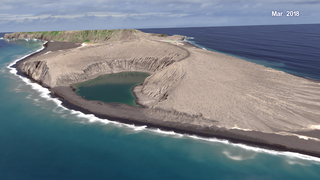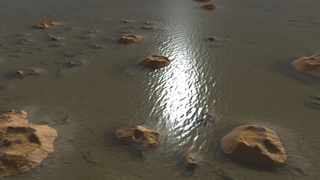Earth
ID: 14214
When the Hunga Tonga-Hunga Ha’apai volcano erupted on Jan. 15, it sent a tsunami racing around the world and set off a sonic boom that circled the globe twice. The underwater eruption in the South Pacific Ocean also blasted an enormous plume of water vapor into Earth’s stratosphere – enough to fill more than 58,000 Olympic-size swimming pools. The sheer amount of water vapor could be enough to temporarily affect Earth’s global average temperature. So outside of its sheer magnitude, what makes this eruption so unique? Well, it’s really a matter of our ability to see it through NASA and ESA satellites.
How NASA Sees the Life Cycle of Volcanic Island Hunga Tonga-Hunga Ha’apai
Related
Credits
Emily S Watkins (Intern): Lead Producer
Kathleen Gaeta (Advocates in Manpower Management, Inc.): Producer
James Garvin (NASA, Chief Scientist Goddard): Lead Scientist
Kathleen Gaeta (Advocates in Manpower Management, Inc.): Producer
James Garvin (NASA, Chief Scientist Goddard): Lead Scientist
Please give credit for this item to:
NASA's Goddard Space Flight Center
NASA's Goddard Space Flight Center
Short URL to share this page:
https://svs.gsfc.nasa.gov/14214
This item is part of this series:
Narrated Movies
Keywords:
DLESE >> Geology
DLESE >> Natural hazards
DLESE >> Structural geology
SVS >> Volcano
GCMD >> Earth Science >> Solid Earth >> Volcanoes
GCMD >> Location >> Tonga
NASA Science >> Earth
GCMD keywords can be found on the Internet with the following citation: Olsen, L.M., G. Major, K. Shein, J. Scialdone, S. Ritz, T. Stevens, M. Morahan, A. Aleman, R. Vogel, S. Leicester, H. Weir, M. Meaux, S. Grebas, C.Solomon, M. Holland, T. Northcutt, R. A. Restrepo, R. Bilodeau, 2013. NASA/Global Change Master Directory (GCMD) Earth Science Keywords. Version 8.0.0.0.0
https://svs.gsfc.nasa.gov/14214
This item is part of this series:
Narrated Movies
Keywords:
DLESE >> Geology
DLESE >> Natural hazards
DLESE >> Structural geology
SVS >> Volcano
GCMD >> Earth Science >> Solid Earth >> Volcanoes
GCMD >> Location >> Tonga
NASA Science >> Earth
GCMD keywords can be found on the Internet with the following citation: Olsen, L.M., G. Major, K. Shein, J. Scialdone, S. Ritz, T. Stevens, M. Morahan, A. Aleman, R. Vogel, S. Leicester, H. Weir, M. Meaux, S. Grebas, C.Solomon, M. Holland, T. Northcutt, R. A. Restrepo, R. Bilodeau, 2013. NASA/Global Change Master Directory (GCMD) Earth Science Keywords. Version 8.0.0.0.0














